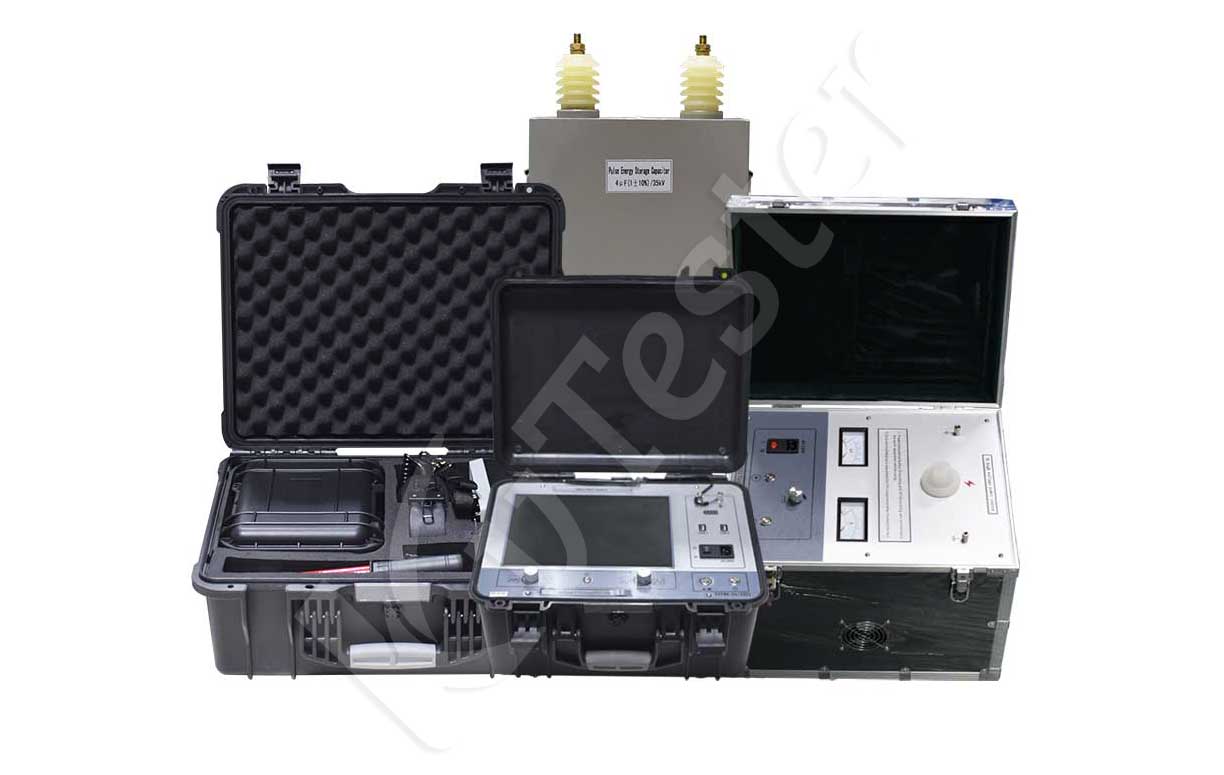Cable fault testers are often used to detect cable faults. Power inspectors determine the point and type of cable fault by analyzing the waveform of the detection. So, how should the waveform of cable fault testers be analyzed? Today, the editor will give you some simple sharing to help you understand this important information!
There are four waveform analysis methods for cable fault testers:
1. Amplitude method:
The amplitude method is an analysis method based on signal amplitude, suitable for low resistance, open circuit, and open circuit faults. In the amplitude method, the cable fault tester sends a test signal to the cable and measures the amplitude of the returned signal. If the amplitude of the returned signal is the same as the amplitude of the transmitted signal, it indicates that the cable is normal; If the amplitude of the returned signal is smaller than the amplitude of the transmitted signal or if there is no signal returned, it indicates a fault in the cable. By measuring the distance between the fault point and the testing end, the location of the fault can be determined;
2. Time domain reflection method:
Time domain reflection method is a method for analyzing changes in signal transmission time, suitable for low resistance, short circuit, and open circuit faults. In time-domain reflection method, the cable fault tester sends a test signal to the cable and measures the time of the returned signal. If the time of the returned signal is the same as the time of the transmitted signal, it indicates that the cable is normal; If the returned signal time is delayed or no signal is returned compared to the sent signal time, it indicates that there is a fault in the cable. By measuring the distance between the fault point and the testing end, the location of the fault can be determined;
3. Frequency domain analysis method:
Frequency domain analysis is a method of analyzing changes in signal frequency, suitable for high resistance, short circuit, and open circuit faults. In frequency domain analysis, a cable fault tester sends a test signal to the cable and performs frequency analysis on the returned signal. If the frequency of the returned signal is the same as the frequency of the transmitted signal, it indicates that the cable is normal; If the frequency of the returned signal is higher or lower than the frequency of the transmitted signal, it indicates a fault in the cable. By measuring the distance between the fault point and the testing end, the location of the fault can be determined;
4. Sound wave method:
The sound wave method is a method of analyzing sound signals by measuring them, suitable for faults such as damage and oil leakage. In the sound wave method, the cable fault tester captures the sound signal emitted from the cable through a sensor and analyzes the propagation time and intensity of the sound. If the sound propagation time is shorter than normal or the sound intensity is higher than normal, it indicates a fault in the cable. By determining the speed of sound propagation and measuring the time of sound propagation, the location of the fault can be determined.
There are only four waveform analysis methods for cable fault testers, each of which is relatively simple, but it is best to understand each one, which will be helpful for future detection.

The ZC-700A2 cable fault tester consists of three main parts: flash testing, tracking, and positioning. It can be used to detect low resistance, high resistance, short circuit, open circuit, leakage faults, and flashover faults of various cables. It can accurately detect the fault location, cable length, and cable burial path of underground cables. It has the characteristics of accurate testing, high intelligence, wide adaptability, stable performance, and lightweight portability. The instrument adopts a Chinese character system, with high-definition display and a user-friendly interface. Cable tracing and fault location are composed of a path finder, a fixer, a T-shaped probe, an A-frame, a receiver, etc. This instrument is a specialized instrument for cable fault location testing, suitable for testing various cables with metal conductors (wire pairs, protective layers, shielding layers). Its main function is to locate and test points with poor ground insulation, detect cable paths, and test cable burial depth.
Kvtester Electronics Technology Co.,Ltd. is a high-tech enterprise specializing in power testing, testing, research and development, production, and sales of testing equipment. It has been engaged in the electrical testing industry for many years, and its products are of high quality. We welcome customers to come and purchase. Service hotline: 0086-27-81778799, to learn more, visit the official website: www.kvtester.com





